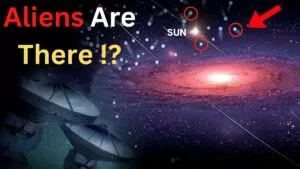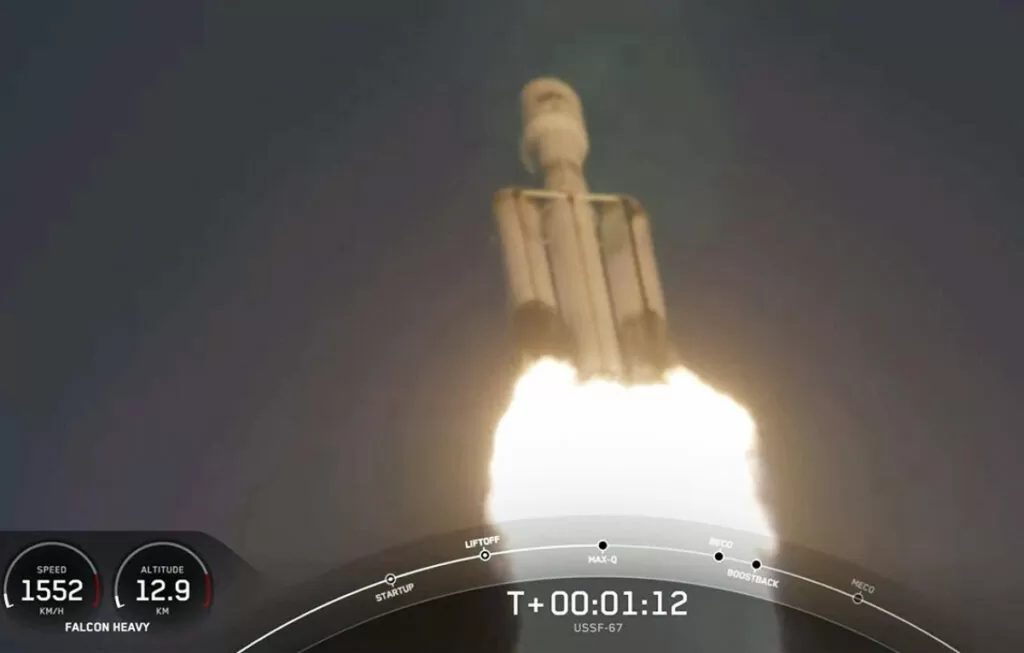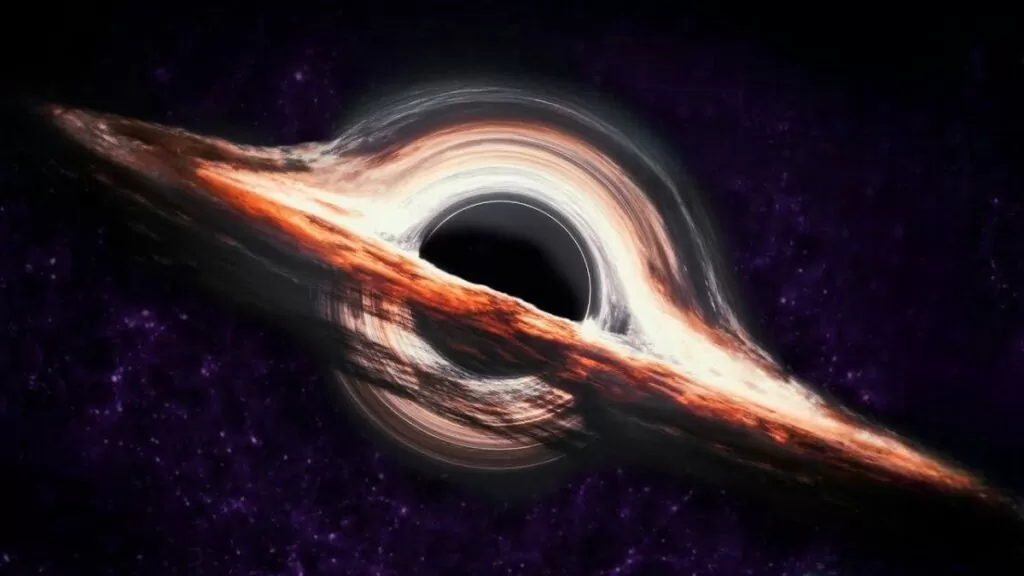
Finding alien life is a challenging endeavor.
How would we know if there are aliens?
The straightforward response would be, “if they visited our planet en masse;” if, just like in the movie Independence Day, their saucers soared above each city on Earth.
or perhaps if their representatives met with us and greeted our leaders around the world with a handshake while national television cameras recorded the event.
Or maybe if they started doing business with us and their products and ideas started showing up in our everyday lives.
Fortunately or sadly, there is not much evidence that this has ever taken place.
However, even though it would be preferable for aliens to visit us, that isn’t the only way they could demonstrate their existence to us.
They would do so using their signals, which seems much more likely.
On this channel, we’ve talked a lot about some of the possible reasons why aliens might not have spoken to us.
On the other hand, what are the strongest indications that they have already carried out this action?
So far, which signals are thought to be most likely to come from an alien civilization?
And instead of explaining why we haven’t heard from aliens, let’s look at where we might have already heard from them.
When it comes to signals from aliens, there is evidently some ambiguity regarding what exactly we are looking for.
After all, aliens are aliens.
We don’t know what to expect from them because they probably evolved in different environments than we do and may have cultural perspectives that make perfect sense to them but are completely foreign to us.
It’s possible that their idea of a nice way to welcome the universe differs significantly from ours.
Regardless of how an extraterrestrial signal might appear, researchers investigating possible signals from other planets must maintain a very open mind.
However, this indicates that these signals may be confused with signals from natural sources that we do not yet fully comprehend.
How can we distinguish the two?
Let me give you a few examples to illustrate my point.
Proxima Centauri, the star closest to our own, was being observed by the Parkes Murriyang telescope in Australia in 2019 as part of the Breakthrough Listen Initiative.
In order to learn more about stellar flares, it was collecting data.
Yet, when SETI specialists – an aggregate term for the Quest for Extra-Earthly Life – went over the information it had gathered in a little while, they found something uncommon.
a signal that was later referred to as BLC1
Could advanced alien life exist on the star closest to us?
Because it was hard for conventional sources to explain away, this signal was fascinating.
It lasted for several hours—longer than what a human satellite typically takes to pass overhead.
It was probably not coming from a stationary object that was causing interference on Earth because it had signal drift, or its frequency was changing. This indicated that it might be moving in relation to the telescope.
Its thin narrowband signal was one of its most compelling attributes.
The range of radio waves in nature is never so narrow; they are always changing.
Technology, whether human or alien, is the only thing that can produce such a concise signal, unless there is some natural source that we haven’t found yet.
Scientists naturally wondered if this was the signal from alien life they had been looking for when human sources offered no obvious explanation for its existence.
In addition to the WOW!
One of the strongest candidates for signals that may have been produced by alien civilizations is Signal, which we looked at in a previous video. Signal BLC1 is one of the signals.
However, even this signal has flaws.
It did match other radio wave “signatures” that came up on other days of the search, but these other signals occurred regardless of which direction the telescope was pointing in. Despite the fact that scientists were unable to connect it to any obvious sources of interference from technology on Earth, a closer examination of the data revealed that it did.
With subsequent observations, they were also unable to detect BLC1, the Proxima Centauri signal.
Therefore, despite the fact that they do not know precisely what caused the telescope to produce BLC1, the probability that it was interference is still quite high.
Let’s look at a different candidate.
The slightly larger SHGb02+14a.
Frank Drake started one of the first SETI experiments, project Ozma, in 1960 on the premise that if alien life could communicate with the rest of the universe, it would do so at a frequency of 1420 MHz.
This made sense because hydrogen, one of the most common elements in the universe, emits this frequency frequently.
A wavelength that probably holds special significance for any race could serve as a kind of common ground for aliens attempting to communicate with other civilizations.
SHGb02+14a would have been interesting in the future, despite the fact that this was a leap of logic.
Since there isn’t a more catchy name for this signal, let’s just call it SHG for the rest of the video. It broadcast at exactly this wavelength.
Using the Arecibo telescope and the computational power of 5, SHG was discovered three times in 2003.
2 million home computers were used as part of the SETI@home initiative, a rather innovative program that has unfortunately ended.
SHG appeared to be no kind of interference and had no obvious natural origins.
However, it was also insufficient to determine whether it was clearly technological.
In addition, its peculiar location was peculiar.
It came from a place far away from Earth with no stars, up to 1000 light years away.
Additionally, it drifted in a manner that raised concerns among scientists.
We can reasonably infer a few things if a signal originates from a planet.
As it alternated between moving away from us and coming toward us along the circular path it was taking in space, a signal being broadcast from a planet, either on its surface or in orbit just above it, would probably experience some doppler shift.
It would also occasionally disappear completely from view as it moved behind the planet.
Although SHG did indeed experience a range of 8 to 37 hertz per second in its signal frequency, this would only come from a planet rotating 40 times faster than Earth, which seemed high.
It was also odd that the signal started at 1420 MHz every time it was seen again, regardless of where it had been before.
In order for this to make sense, you would need to look at an orbiting transmitter three times to see it start at the same place. The chances of this happening are extremely low.
Based on this observation, it appeared more likely that SHG was caused by a technology flaw.
We gain an intriguing understanding of how SETI determines whether something may be of alien origin by examining the procedure by which the BLC1 or SHG signals were evaluated.
In the words of his famous detective Sherlock Holmes, this method seems to me to be most in line with this quote from Sir Arthur Conan Doyle: At the point when you have killed the unthinkable, the straggling leftovers, but implausible, should be reality.
Every time a new signal was discovered by researchers, they began by eliminating all possible alternatives.
Could it be a passing satellite’s interference?
Is there anything we know of in nature that might be causing this effect?
Can we provide any other explanation for this signal’s presence and behavior?
For these potential candidates for alien communication, alternative explanations have been discovered thus far.
Even when human influence cannot be completely ruled out, it is still possible that these enigmatic signals are natural phenomena that have not been observed before.
Fast radio bursts are the final candidate for alien signals, and I’d like to leave you with that discussion right now.
It’s possible that the presence of an extraterrestrial civilization wasn’t out of the blue.
A galactic civilization could be identified by energy bursts released by powerful engines or beams firing.
Which is what makes FRBs, or Fast Radio Bursts, interesting.
They are, as the name suggests, extremely rapid radio wave bursts.
We’ve seen hundreds of these odd, millisecond-long bursts all over the sky.
There could be thousands of them occurring each day, according to scientists.
They have mostly been found outside our galaxy, but one was found in 2020 in the Milky Way, so they aren’t totally alien to us.
They appear to be emanating from exceptionally strong magnetic fields.
Additionally, scientists do not yet have a definitive understanding of their possible ancestry.
There are numerous hypotheses, including the possibility that neutron stars or black holes emit them.
However, there is no evidence to support any theory, including the theory of alien technology.
The CHIME radio telescope in Canada is ideal for detecting these brief blips in space due to its distinctive design.
CHIME’s multiple cylindrical parabolic reflectors are able to simultaneously collect data from an entire swath of the sky, avoiding the trap that other telescopes fall into. Instead of pointing at a single point in space, CHIME’s reflectors are able to avoid.
It began detecting in 2018 and continues to function effectively today.
It has found repeating FRBs as well as one that is definitely connected to a Magnetar star.
It’s possible that these stars can be linked to all FRBs.
Maybe not.
However, that is not the point.
It’s possible that we will one day be able to determine the natural origins of all FRBs and identify their origins.
It’s possible that the search for alien life will need to be restarted.
However, there is always a fleeting hope that one day, as scientists rule out signal after signal, a signal that defies alternative explanation will emerge.
In the words of that great detective, we will be forced to accept the improbable if all other explanations are ruled out, if we can confirm that no natural cause was involved.
So, these are some of our best possibilities for signals from another planet, but even they have a lot of obstacles in their way.
We have not yet discovered a signal that definitively supports the existence of extraterrestrial life.
However, that does not mean we will never do so.
Until the point where it is, it is never aliens.
It is highly unlikely that we will ever be able to determine whether the WOW signal marked humanity’s first encounter with extraterrestrial life.
Even though we have learned so much about the depths of our solar system, it is still challenging for us to agree on what is happening on our own planet.
Harleen Kaur, a former Rolls Royce employee turned NASA engineer, started a news platform in response to this idea.
She had been selling and managing jet engines for Rolls Royce.
She received a terrifying text message one day about the Malaysian Airlines Flight 17’s double engine failure.
It was amazing that we had to wait hours for a journalist, a camera crew, to go to the scene and figure out what happened to the plane. To be honest, we still don’t really know what happened to the plane. She started thinking about how to create a better news reading experience that would help people verify information in real time by comparing multiple perspectives from journalists on the ground and around the world.
In addition, an international team of investigators released their analysis of what happened to Malaysian Flight 17, which you can read about on Ground News, the platform Harleen built, more than eight years later.











